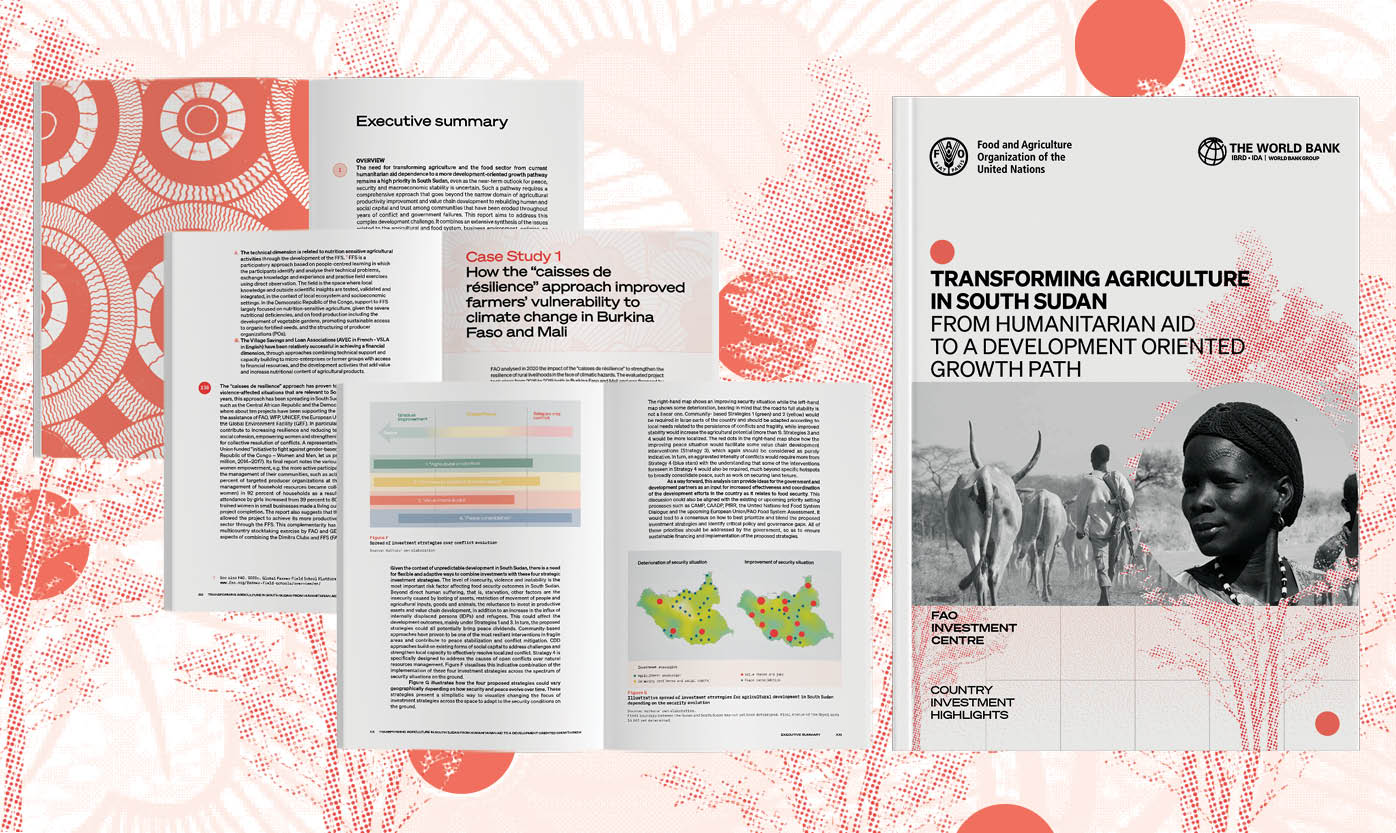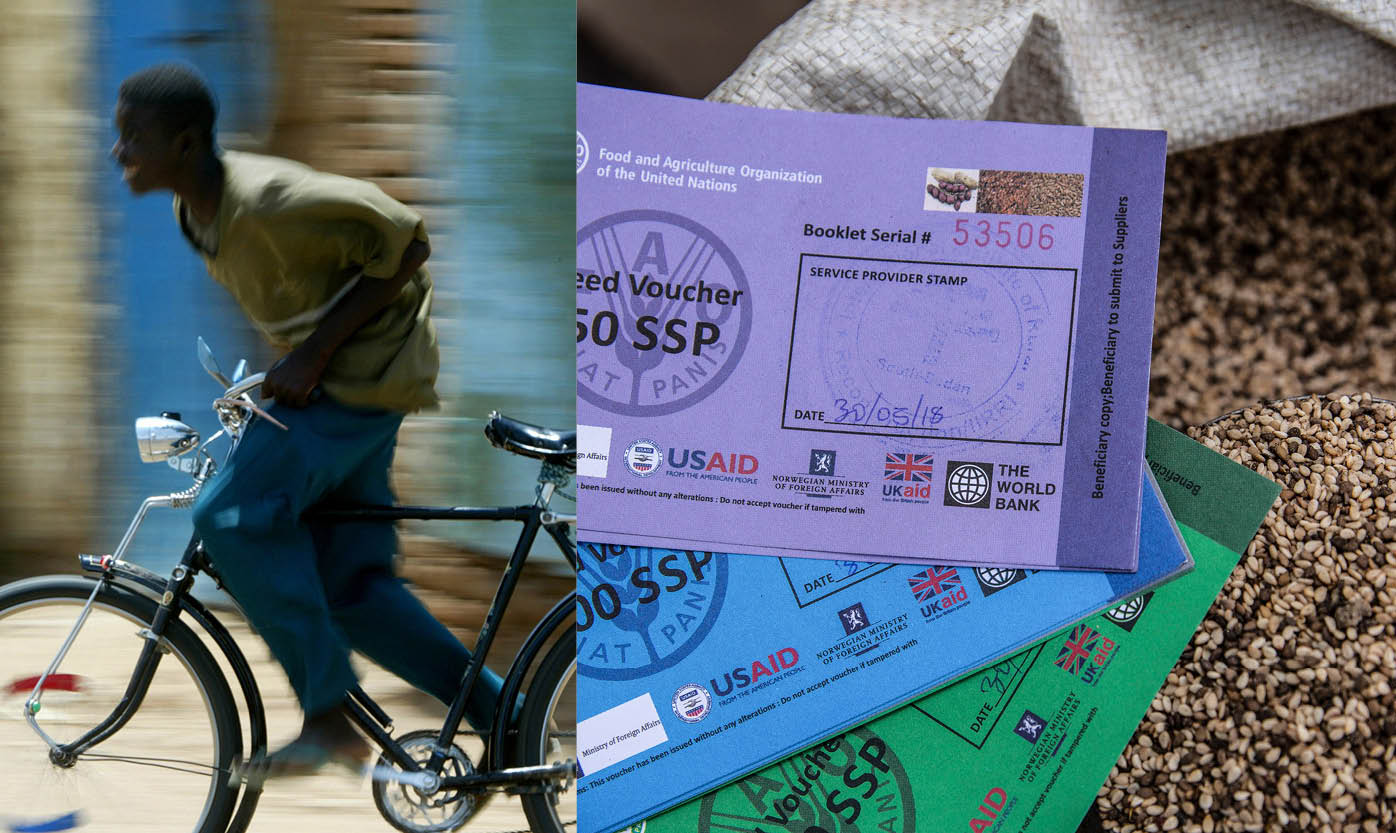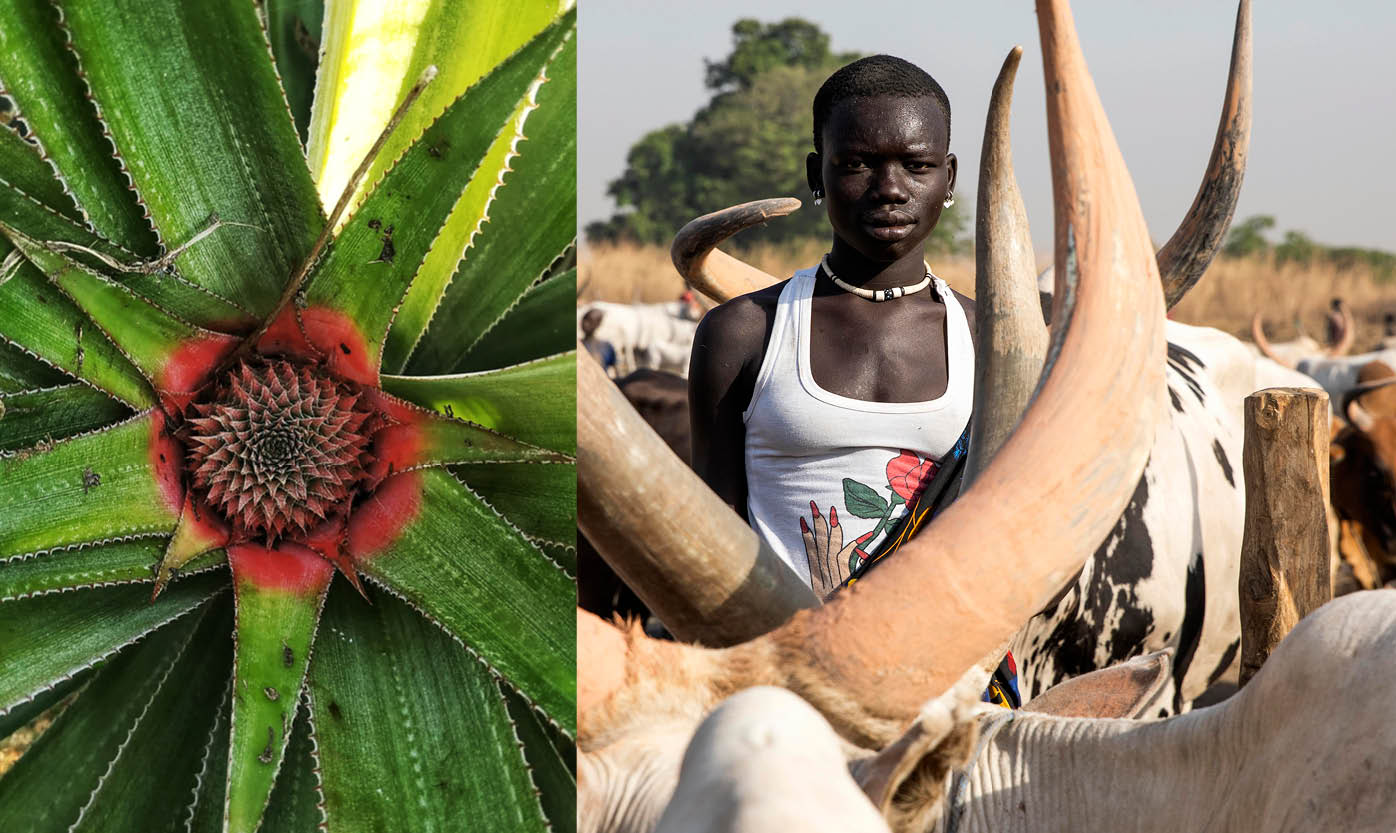Charting a path towards development and growth in South Sudan

Despite massive humanitarian aid, South Sudan, the world’s youngest country, ranks near the bottom of the Human Development Index.
Since gaining independence in 2011, it has struggled with conflict, natural disasters and macroeconomic instability. Poverty, malnutrition and displacement rates are high, and basic infrastructure – roads, electricity, access to clean drinking water – is lacking.
But South Sudan is rich in natural resources, from abundant land for crops and livestock to fresh water for fisheries, irrigation and hydro energy. A well-developed agrifood system could provide major opportunities to improve food security, create jobs, boost incomes and foster peace.
The FAO Investment Centre teamed up with the World Bank to produce Transforming agriculture in South Sudan: from humanitarian aid to a development-oriented growth path.
The analysis looks at the investment, policy and institutional support needed to transform the country’s agriculture sector.
It advocates for a comprehensive approach that goes beyond agricultural productivity to include value chain improvements and the rebuilding of human and social capital and community trust.
South Sudan, like many countries going through protracted crises, has been under humanitarian assistance for a very long time. It has never tapped into its huge agriculture potential, and the country’s food security situation is dire.
“The importance of this work lays in its acknowledgment that, while South Sudan will continue to need humanitarian aid in years to come to respond to the current urgent food crisis, development gains are possible with different strategies that recognize the conflict situation on the ground and address some of the root causes of conflict and food insecurity,” said Vanina Forget, Senior Agricultural Economist in the World Bank’s Africa Sustainable Development Policy Unit.
She added that the work “could become a roadmap for international investors to partner on the broader reform agenda to move South Sudan from humanitarian aid to a development focus.”

Complementary investment strategies
The team conducted a thorough review of South Sudan’s agrifood system, policy and regulatory environment, infrastructure, institutions and governance arrangements. Based on this information, along with lessons from South Sudan and other fragile and conflict-affected countries, and broad multistakeholder consultations, the team identified four complementary investment strategies.
The first strategy argues that South Sudan needs to boost and diversify agricultural production and productivity significantly to improve food security and nutrition. That includes developing innovative community-based agricultural extension and animal health services and improving the supply of good quality inputs and equipment.
Strengthening community resilience and rebuilding human and social capital is the focus of the second strategy. This can be done by improving access to community infrastructure and savings and loan groups, empowering women and enhancing capacity in community dialogue and conflict resolution, among other activities.
Developing agrifood systems in fragile situations requires investments and knowledge beyond primary production. The third strategy looks to support the growth of agribusinesses and job creation. Priority investments focus on improving the capacity of producer organizations and small and medium enterprises to access finance and market information, and on building productive infrastructure, like rural roads, water management facilities and renewable energy.
The fourth strategy centres around peace consolidation, from resolving conflicts through community dialogue, mediation and negotiated territorial development on issues like access to natural resources and improved land tenure security and rights.

A flexible, adaptive approach
According to FAO Senior Economist Benoist Veillerette, the volatile, unpredictable and rapidly changing situation in South Sudan calls for a flexible and adaptive approach when combining the strategies.
“The strategies are complementary, but you can’t apply them in a blanket way throughout the country,” he said.
“South Sudan is very big, and different regions have different needs – and those needs can change over time,” he added. “A region could slip back into conflict or be hit by an infestation of locusts or flooding, requiring different priority investments.”
The broad investment framework is designed to guide policy-makers and development partners in identifying investment projects and programmes in the country. And it already is.
IFAD and FAO used some of the analysis, particularly on strengthening producer organizations and cooperatives, to help the Government of South Sudan prepare a proposal for Global Agricultural and Food Security Program (GAFSP) funding, which was approved in late 2021.
And the work has informed two ongoing World Bank-financed projects, totalling USD 116 million, that aim to strengthen the capacity of farmers, improve agricultural production and restore livelihoods and food security.
Further, the report makes clear that the country’s agricultural transformation must be led by the Government through an inclusive and multistakeholder process for widespread buy-in.
Government policy, good governance and strong partnerships to develop, finance and carry out the strategic investments will be key to the transformation’s success.
